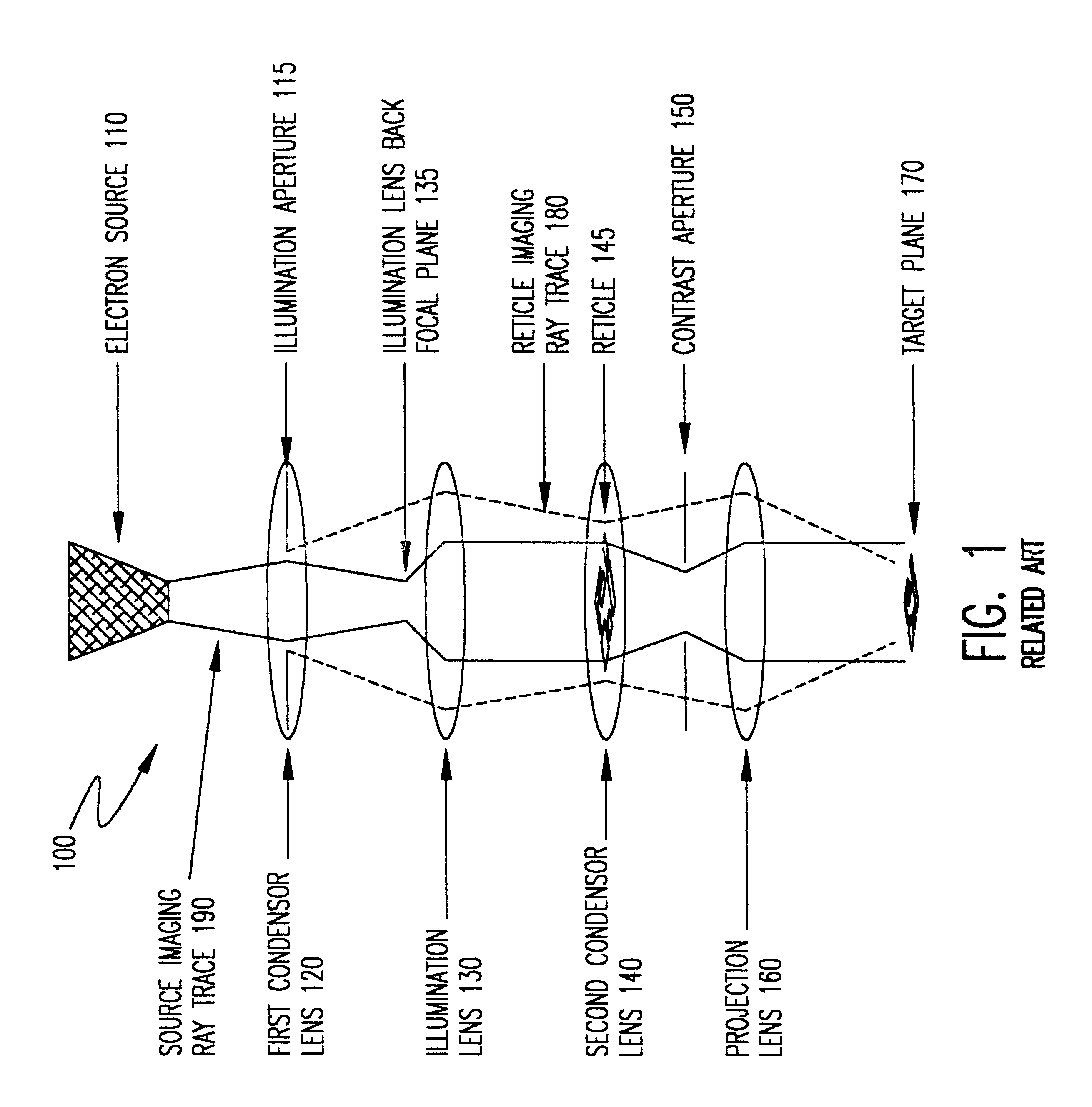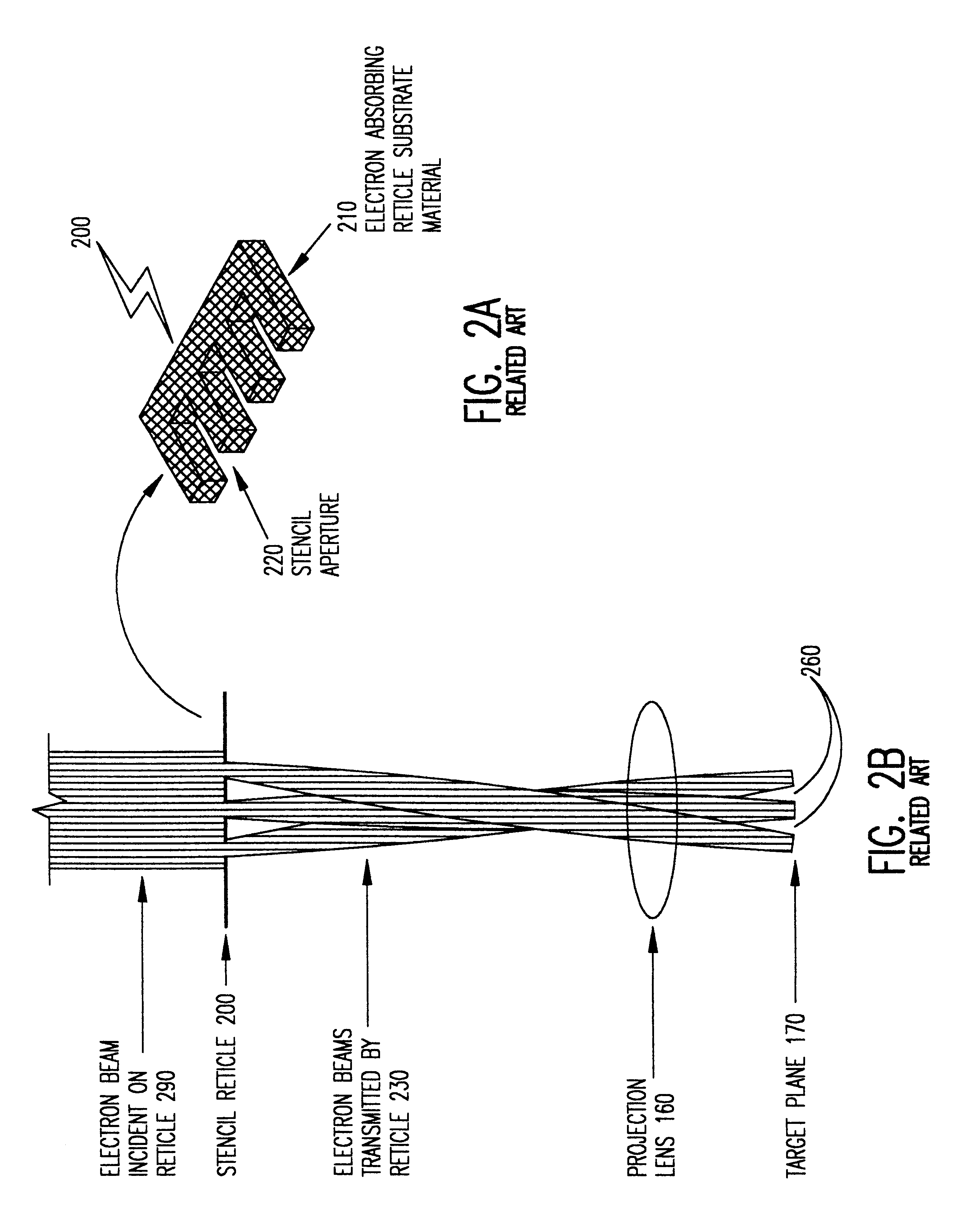Stencil reticle incorporating scattering features for electron beam projection lithography
a technology of electron beam and scattering features, applied in the field of charged particle beam optical systems, can solve the problems of increasing the cost of production of even modest numbers of moderately complex integrated circuit designs, and affecting the quality of electron beam projection lithography
- Summary
- Abstract
- Description
- Claims
- Application Information
AI Technical Summary
Benefits of technology
Problems solved by technology
Method used
Image
Examples
Embodiment Construction
Referring now to the drawings, and more particularly to FIG. 1, there is shown, in highly schematic and much simplified form, the major elements of an electron beam projection system 100. In FIG. 1, as in other Figures, structures and functions are depicted in a manner considered most useful in conveying an understanding of the invention. The term "known" is used to refer to that over which the present invention provides an improvement but is specifically not intended as an admission of prior art in regard to the present invention. It should also be understood that the basic principles of the invention are grounded in the enhancement and exploitation of a combination of effects largely unrecognized and unexploited, even singly, in known reticles and which are best explained in connection with structures considered "known". Accordingly, FIGS. 1-4B are denoted as "Related Art" in order to accurately reflect their connection with and relevance to the present invention, including the as...
PUM
| Property | Measurement | Unit |
|---|---|---|
| atomic number | aaaaa | aaaaa |
| thickness | aaaaa | aaaaa |
| density | aaaaa | aaaaa |
Abstract
Description
Claims
Application Information
 Login to View More
Login to View More - R&D
- Intellectual Property
- Life Sciences
- Materials
- Tech Scout
- Unparalleled Data Quality
- Higher Quality Content
- 60% Fewer Hallucinations
Browse by: Latest US Patents, China's latest patents, Technical Efficacy Thesaurus, Application Domain, Technology Topic, Popular Technical Reports.
© 2025 PatSnap. All rights reserved.Legal|Privacy policy|Modern Slavery Act Transparency Statement|Sitemap|About US| Contact US: help@patsnap.com



